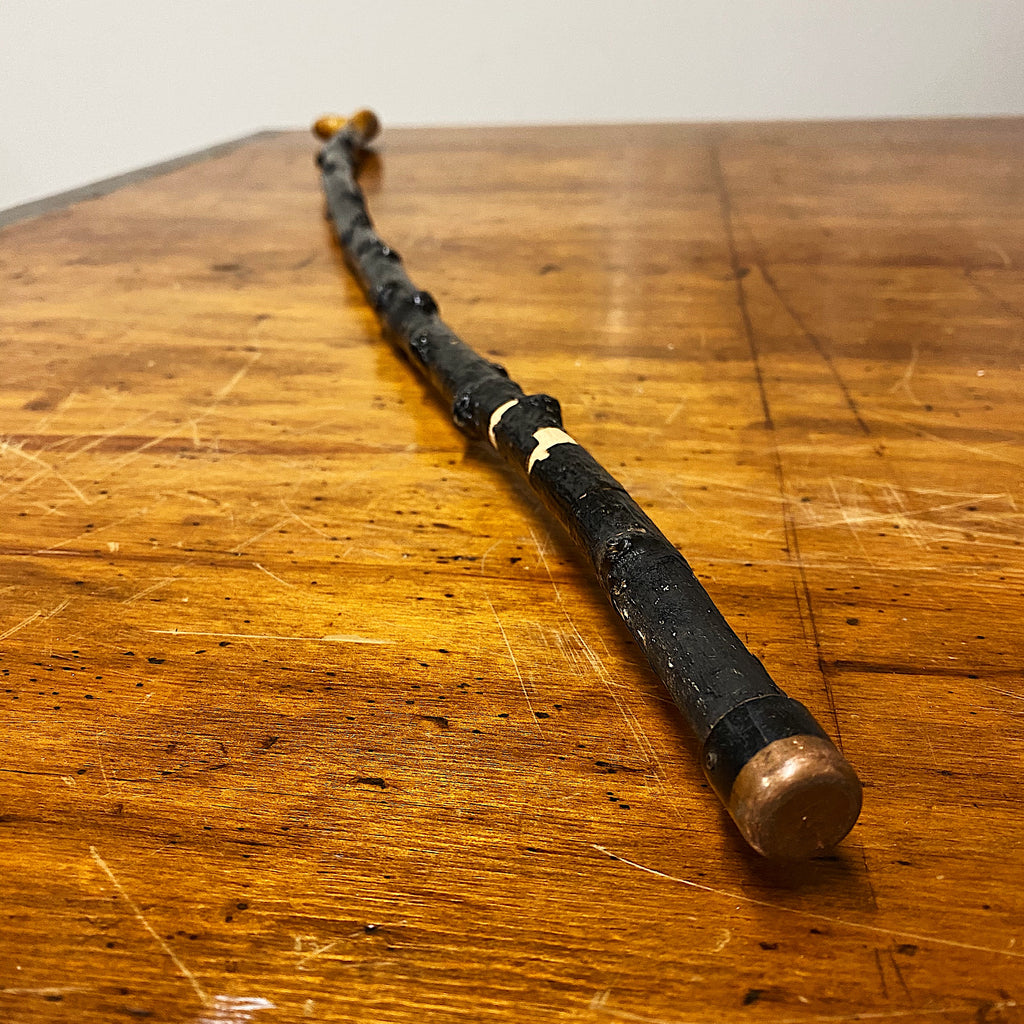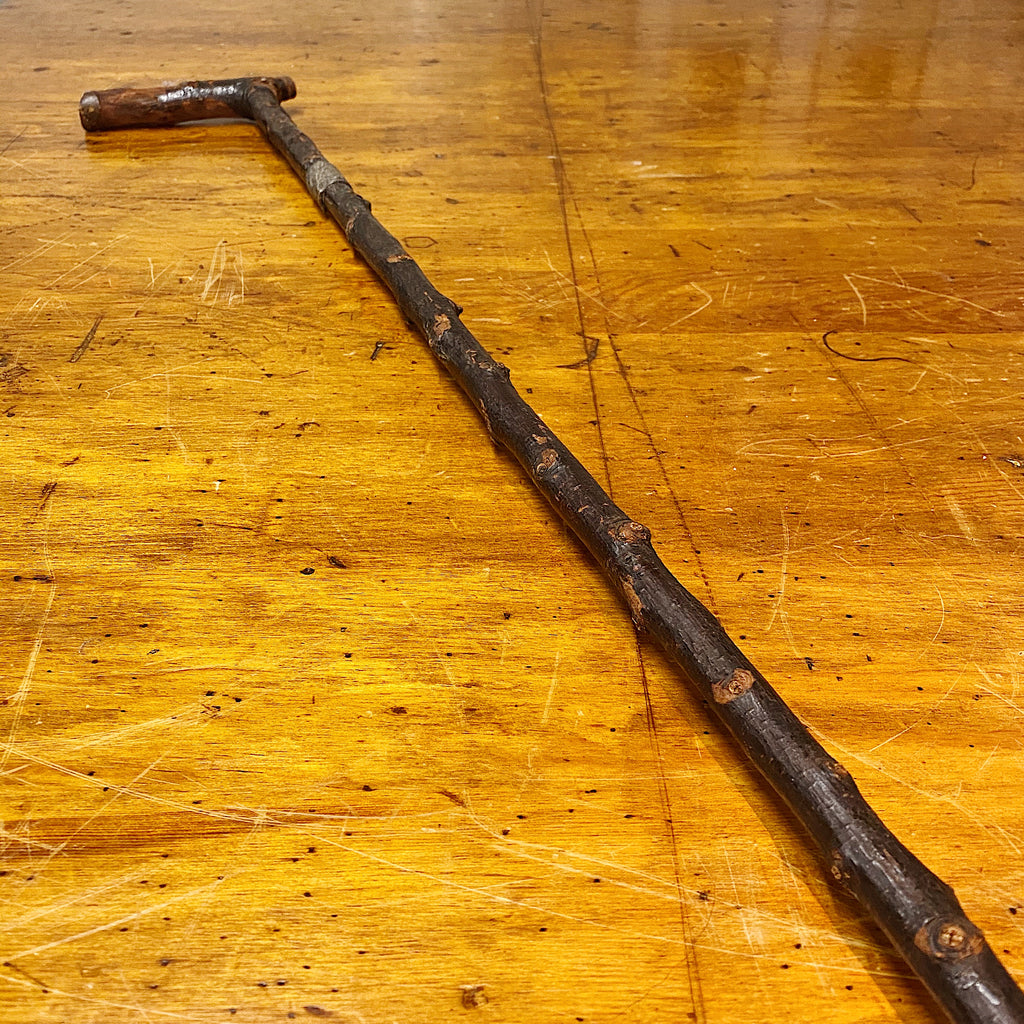

In 1670, Major Thomas Weir of Edinburgh was garrotted and burned for witchcraft along with his blackthorn walking stick. It was said that witches used thorny blackthorn wands to curse people and had magic walking sticks of blackthorn wood with which to cause trouble. The old relationship with the crone led the Christians to link the blackthorn with witches and dark magic. Witches were said to use blackthorn wands Of course, it could also be due to its dark and twisted form. Perhaps it is due to this association that the blackthorn is sometimes known as the dark crone of the woods. In Scottish-Gaelic the word Cailleach literally means ‘veiled one’ or ‘old woman’.

One portrayal of the Cailleach, of which there are many, is of a blue veiled old woman with a raven perched on one shoulder and a blackthorn staff in hand which she uses to create mountains, lakes and valleys and also bring about snow storms and rough weather. Its closest modern equivalent would be the letter z. Ss Straif, is the 14th letter in the ogham alphabet. So, why does the blackthorn have such a dark reputation? Blackthorn guarded by unfriendly fairies The berries, leaves and bark of the tree are said to stimulate metabolism, clean the blood, heal stomach upsets and disperse toxins from the body. Sloe berries can be very carefully picked during October, after a frost, and used to make sloe gin, a mixture of sloes, sugar and gin left to mature for nearly three months to be enjoyed as a yule tide treat.

It is a haven for birds such as the, now rare, nightingale who find protection amongst the tree’s long thorns. The blackthorn is often associated with overcoming obstacles for a better future or protection and hope in the midst of devastation. The Origins of the Ogham alphabet are still a mystery for many historians, but it is primarily thought to be an early form of the Irish written Language. Ogham, the mysterious language of the trees


 0 kommentar(er)
0 kommentar(er)
